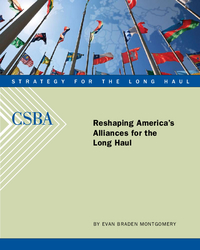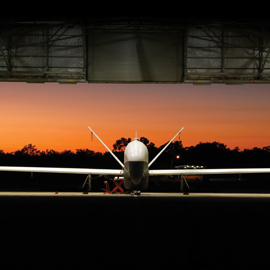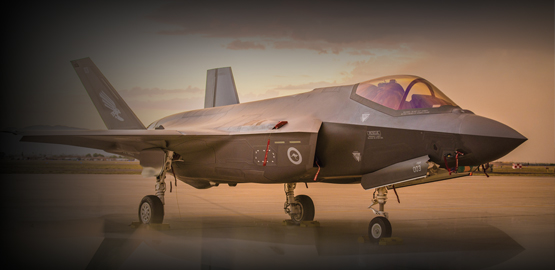
The United States currently faces a host of critical foreign and defense policy challenges, including the wars in Afghanistan and Iraq, instability in Pakistan and the reconstitution of an operational sanctuary for key elements of al Qaeda and the Taliban in parts of that country, Iran’s development of an indigenous uranium enrichment capability and perhaps a nuclear weapons program as well, a resurgent Russia that is increasingly authoritarian at home and assertive abroad, and China’s ongoing development and deployment of advanced military capabilities. In addition to managing these current conflicts and potential crises, the President and his advisors will also be responsible for decisions that will shape US defense strategy and force structure for years and possibly even decades to come. Because the dangers the United States now faces are so numerous and so demanding, one of the most critical tasks for the Obama administration will be to reassess and reshape America’s military alliances.
America’s Growing Need For Allies
For more than half a century alliances have proven to be a crucial and enduring source of advantage for the United States, particularly as it sought to implement its decades-long strategy of containment against the Soviet Union during the Cold War. Nevertheless, within the United States the perceived need for allies has waxed and waned throughout the nation’s history. Most recently, with the collapse of the Soviet Union in 1991, the United States entered what some referred to as the “unipolar moment”: a period during which America’s economic and military power was unprecedented and its dominant position in the international system was essentially uncontested. One notable consequence of this situation was a decreased need for military alliances.
Throughout the 1990s, with no peer or near-peer competitor on the horizon to challenge American hegemony, the United States required alliances for its security far less than it did during the Cold War.
Today, however, there is a growing recognition that the existing and prospective threats confronting the United States, as well as the broader changes taking place in the security environment, necessitate a renewed emphasis on alliances.
Although the United States still remains the world’s preeminent global power, its advantage over potential rivals and competitors appears to be in the early stages of relative decline.
Nations such as China and India are emerging as major powers that will increasingly compete with the United States and with one another for influence, and are likely to have a growing impact on international affairs in the years ahead. In addition to this general trend, it is increasingly apparent that the United States will be confronted with three primary and enduring strategic challenges over the next two decades: defeating (or at the very least weakening and containing) violent Islamist extremist groups, in particular al Qaeda and its various affiliates; hedging against the rise of a more powerful and more assertive China; and preparing for a world in which nuclear weapons have been acquired by a number of additional nations (and perhaps even terrorist groups), at least some of which may be hostile toward the United States. Because the United States is now facing or may soon face these three very different challenges, its already wide-ranging global commitments are increasingly under stress, while its limited diplomatic, military, and intelligence capabilities are progressively more dispersed and strained. Moreover, this is occurring just as the United States’ relative economic and military power is beginning to wane. For these reasons, and because this situation is unlikely to change in the foreseeable future, the United States must give renewed attention to the status and nature of its alliances.
America’s current alliances are by and large an artifact of the Cold War, however, and it is not evident that they are adequate or appropriate for helping the United States meet its security challenges. Nor is it clear what role America’s current allies should be asked to play. The purpose of this report is to evaluate these issues and offer suggestions on how the current US alliance portfolio should be revised to address the three overarching challenges the United States is likely to confront in the years ahead.
Countering the Terrorist Threat
Perhaps more than any other challenge the United States currently faces, countering the threat of violent Islamist extremism will require the support of allies and partners. As the United States confronts this challenge today and in the years ahead, it will need to collaborate with as many nations as possible (and with nonstate actors where governments are extremely weak, uncooperative, or simply nonexistent) to gather and share intelligence. It must also work closely with allies that possess significant counterterrorism and counterinsurgency capabilities in order to hunt down terrorist operatives and prevent weak nations from becoming sanctuaries, and bolster the capabilities of unstable nations or territories so that they can address internal threats themselves.
The importance of the third task — often referred to as “building partner capacity” — has been emphasized repeatedly over the past several years, as the United States has struggled to fight the wars in Afghanistan and Iraq while simultaneously conducting other counterterrorism operations across the globe and preparing for an era of persistent irregular warfare. Although this type of indirect approach is intended to conserve resources by preventing nascent threats from fully materializing and by putting at-risk nations in a better position to combat sources of instability on their own, the United States’ ability to train, advise, and equip foreign security forces is limited, while the demand for these services appears to be limitless.
One way to address this gap is to adopt a more “layered” indirect approach that both improves and leverages the capabilities of US allies. Here, the United States and core allies such as Britain and Australia would work with Jordan, Egypt, Saudi Arabia, India, and others (all nations that have significant experience combating terrorist and insurgent groups and have achieved some notable successes in these areas) to enhance their ability to conduct their own training and advisory missions.
These allies could then assist the United States by expanding their efforts to build partner capacity in weak, vulnerable, and failing nations. In this case, primary tasks for the United States would include: coordinating closely with its allies to determine where they are best suited to conduct these missions; jointly designing, funding, and providing logistical support for and then monitoring these missions; and helping to equip nations receiving support with the tools they need, such as small arms, body armor, communications equipment, rotary wing transport, and civilian vehicles, as well as patrol and riverine craft where necessary.
America’s Asian Alliances and the Rise of China
Although the rise of China may ultimately be peaceful, the United States must be prepared for the possibility that Beijing will become a more hostile power, whether as the result of international conflicts of interest or internal instability leading to external aggression. In doing so, America’s allies and partners in the region will play a critical role by helping to shape the trajectory of China’s rise, dissuading aggressive behavior on its part, and checking Chinese aggression if necessary.
Specifically, the United States should continue its current strategy of strengthening and building closer relationships with nations in the region, in particular Japan, Australia, and India, all of which can serve as potential counterweights to China both individually and in concert with the United States. While cooperation with Japan should focus on the continued development and deployment of ballistic missile defense systems, the United States should also explore the possibility of new access agreements and even basing options in Australia, and should support India’s efforts to develop an increased blue water naval capability that could balance future Chinese efforts to project maritime power into the Indian Ocean.
In addition to strengthening bilateral ties with these and other nations in the region,
the United States should encourage closer bilateral and multilateral ties among its allies, to include joint military exercises in areas such as counterterrorism, counterinsurgency, maritime security, noncombatant evacuation operations, and disaster relief. By working more closely with its regional partners and fostering greater cooperation between them, the United States can retain and perhaps expand its influence with these nations, increase interoperability between their forces and those of the US military, and improve the prospects of US allies and partners balancing against rather than bandwagoning with China if it becomes hostile.
Meeting the Challenge of Nuclear Proliferation
Further nuclear proliferation could create a number of strategic and operational dilemmas for the United States, but the increased possibility of conducting military operations against a nuclear-armed opponent, the increased chance that terrorists might acquire and use a nuclear weapon, and the prospect of a proliferation “chain reaction” in the Middle East stand out as the three most worrisome potential developments.
Unfortunately, when preparing to address the first of these dilemmas, the United States must be prepared to act without much support from other nations, as allies facing the possibility of a nuclear reprisal are unlikely to consent to the use of their territory for military operations, which is perhaps the most critical contribution they could make. To address the threat of nuclear terrorism, however, allied support will be crucial. Not only must the United States work as closely as possible with Russia and Pakistan to ensure the security of their nuclear weapons and fissile material stockpiles, it should collaborate with its allies in the Middle East to delegitimize mass casualty (and especially nuclear) terrorist attacks, and may also wish to consider undertaking the necessary training, joint exercises, and technology transfers that would allow nations such as Britain, France, Australia, Singapore, and possibly others to reliably interdict and render safe a stolen or improvised nuclear device. Finally, preventing a spiral of proliferation in the Middle East will be a critical goal if Iran’s nuclear program continues to progress, and especially if Tehran develops nuclear weapons.
This raises the possibility of the most significant expansion of US alliance obligations since the start of the Cold War, namely, committing to retaliate against Iran for an attack on its neighbors to dissuade the latter from pursuing nuclear weapons. Although this could ultimately be the best or only way to convince Iran’s neighbors to forgo nuclear weapons, this option should not be pursued until it has been studied in depth.



























